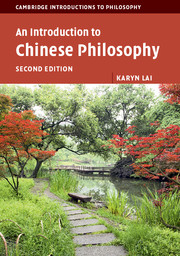This book covers major philosophical traditions in early Chinese philosophy, focusing especially on its foundational period, prior to 200 BCE. It discusses on concepts, themes, reasoning and argumentative methods in Chinese philosophy, introducing readers to fundamental ideas in the different traditions, debates among thinkers, cross-influences between traditions, as well as interpretive theories about these ideas, including views expressed in contemporary scholarship. The chapters are organised partly on the basis of thematic coherence and continuity and loosely according to chronological order. A Chronology is provided at the outset, placing key thinkers in relation to one another. This list is selective and brief, situating only those thinkers and periods that are discussed in the book. The at-a-glance table should help the reader locate thinkers in their historical context in relation to other thinkers. Dates are also included in the text in places where they are integral to the specific point being made.
In a number of chapters, a section discussing textual matters is included. These cover, for example, details of different versions of texts, connections between text and thinker, or the dating of texts, where relevant. Some of this material is quite technical, though readers should find the information helpful in understanding how Chinese intellectual history shapes our grasp of Chinese philosophy.
For the sake of consistency, within citations, English transliterations of Chinese concepts, and names of thinkers and texts, have been modified to the standard Pinyin system. However, the names of modern and contemporary scholars (e.g. Fung, Yu-lan) have been retained so as not to confuse bibliographic data. A short list of Suggestions for Further Reading, of primary and secondary sources, is provided at the end of each chapter. A more extended Bibliography is included at the end of the book. Two separate lists, Primary Texts (listed alphabetically by title) and Secondary Sources (listed alphabetically by author), provide more extensive reading suggestions. References to primary texts follow this format: Graham, Chuang-Tzu, 2001; and secondary sources are listed in this way: Fingarette, 1983. The Glossary at the end of the book is set out in three sections, comprising texts and sections of texts, names and proper nouns and concepts and themes. The lists are alphabetically arranged in Pinyin transliteration, and, where possible, an English translation is provided.
